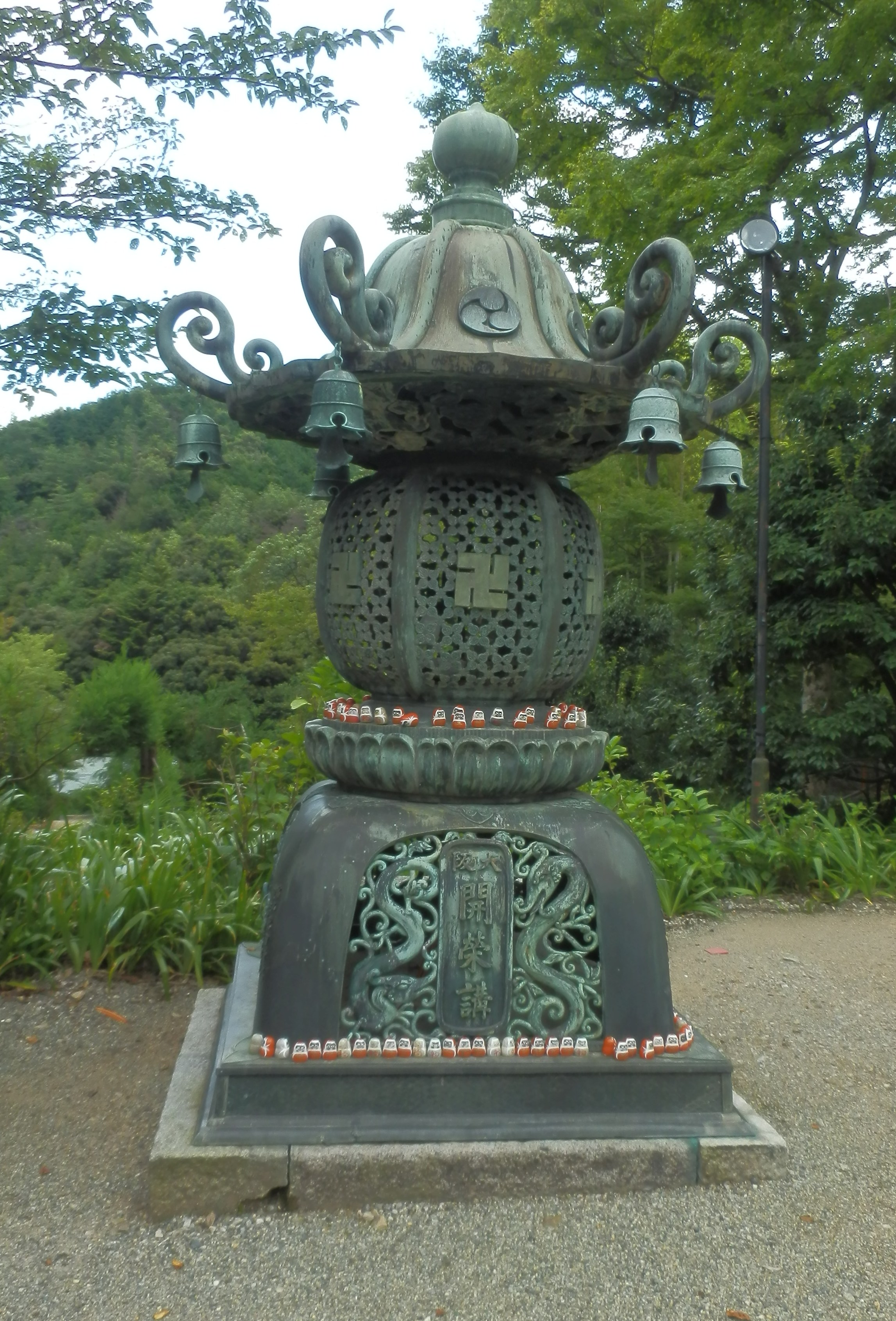Saigoku Kannon Pilgrimage: The End of Our Journey
Hello Hyogonians!
We have come to the end of the temples with which I have any direct experience; I’d like to leave you with an overview of those temples that remain.  All ten of these temples were out of my reach either for timing or travel reasons. Some of them beckon spectacularly, and I hope to get back to Japan to visit them one day, especially temples 1 and 33, although each one appears to have its own unique charm.
Seiganto-ji é’岸渡寺 – Temple 1
Location: Nachikatsuura, Higashimuro District, Wakayama‎
Main Image: Nyoirin (Wish-fulfilling) Kannon
Special information:Â Although it is one of the farthest from Hyogo, this temple is a spectacular one. It is joined with the Nachi Taisha, one of the grand three shrines of Kumano. The famous Nachi waterfall is one of the main features of this shrine. There is also a sub-temple, Fudarakusan-ji, from which 60-year-old abbots once sacrificed themselves by being put to sea. Between the glorious Nachi waterfall, the imperially protected virgin forests, the ancient mountain paths, and the coastline dotted with fishing hamlets and hot springs, Seigantoji is a destination in and of itself.
Important Dates: The main Kannon image goes on display yearly on August 17th. Nachi Taisha (grand shrine) has a fire festival on July 14th.
Find out more: here and here.
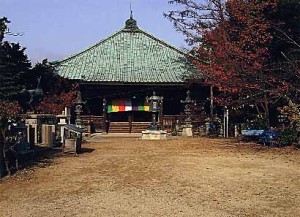
Sefukuji    施ç¦å¯º – Temple 4
Location: MakiosanchÅ, Izumi-shi, ÅŒsaka-fu
Main Image: SenjÅ« Kannon – This is the only temple on the route where Kannon is not the central figure of veneration (the main figure being Miroku (Maitreya), the Buddha of the Future).
Special information: Sefuku-ji can only be reached by a steep climb up a set of stone stairs; this hike is one of its main features, and is the path along which you will see many of its other enchantments, including statues and thatch-roof shrines. Sefukuji’s formal name is Makinodera 槙尾寺, which means “Temple at the End of the Sutraâ€. It is said that when the mountain ascetic GyÅja was wandering through the area chanting the Lotus Sutra, this was the place he rested at the end of his long recitation.
Important Dates: The Kannon image is displayed yearly on May 15th.
Find out more: here and here
Iwama-dera   岩間寺 – Temple 12
Location: Ishiyamauchihatacho, Ōtsu, Shiga‎
Main Image: Senjū (Thousand-armed) Kannon
Special information: Iwamadera is difficult to reach by public transportation, but a local bus does run on the 17th of each month for the temple’s famous ceremony for the prevention of senile dementia. The temple has a female abbot, and is connected to the ascetic mountain practices of shugendo. On the grounds are a few sacred aktsuura trees, as well as an image of Bokefuji (prevention of senile dementia) Kannon. It is a peaceful and sacred space.
Important Dates: The main Kannon image goes on display every 33 years.
Find out more:Â here
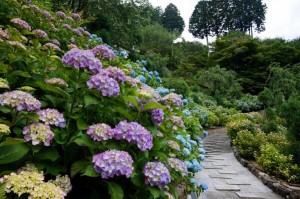
Yoshiminedera   善峯寺 – Temple 20
Location: Oharano Oshiocho, Nishikyo Ward, Kyoto
Main Image: Senjū Kannon has 42 arms which represent the one thousand arms: each hand holds an implement symbolic of Kannon’s power to heal, and each one of these arms is also represented as a figure of Kannon.
Special information: Yoshimine-dera is one of those large mountainside complexes with a lovely view over Kyoto. The temple is also home to Japan’s #1 pine tree, the Yuryū no Matsu (Playing Dragon Pine). The gardens blend into the natural mountain landscape, where wild herbs are collected by temple priests for the traditional herbal baths offered by the temple between May and October when the Kannon image is open to viewing (thus the pilgrim is healed in body as well as spirit). The temple is famous for miracles of healing.
Important Dates: The Kannon image is opened on the second Sunday of each month for pilgrims to see, at which time, the temple also offers a curative herbal bath for pilgrims in a special bath house for that purpose.
Find out more: here and here
AnaÅji     穴太寺 – Temple 21
Location: Higashinotsuji-46 Sogabecho, Anao, Kameoka, Kyoto Prefecture
Main Image: ShŠKannon (sacred Kannon), a secret image shown once every 33 years. This image is also known as Migawari Kannon – Self-sacrificing Kannon – which relates to the founding story of the temple. She is also called Anzan Kannon, who is believed to grant easy childbirth.
Special information: This is a quiet little temple sitting peacefully amid the rice fields in a village that seems barely touched by modern times. There is an exquisite wooden image of the Nehan Buddha inside the old temple, slumbering under his quilt, waiting for pilgrims who come to touch his body in the hope of being healed.Self-Sacrificing Kannon is so called for taking an arrow in the place of the statue’s sculptor priest, who was targeted after finishing the work.
Important Dates: the Kannon image is opened once every 33 years.
Find out more here
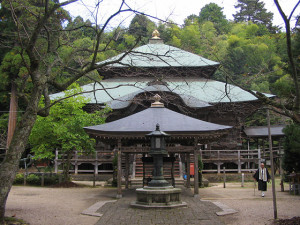
Matsuno-odera   æ¾å°¾å¯º – Temple 22
Location: Matsunoo, Maizuru, Kyoto Prefecture
Main Image: This is the only temple on the pilgrimage whose principal image is Bato Kannon, which has a wrathful face; and instead of a small image of Amida Buddha at the front of the head-dress Bato Kannon has a horse. This Kannon takes care of the spirits of the dead who are trapped in the Realm of the Animals, and has been revered here for over a thousand years as a protector for farming husbandry, as well as horses for transport, and even for ensuring success at horse racing!
Special information:Â MatsunÅ-dera is a quiet rural temple set high on Mt Aoba overlooking the wild and rugged northern coastline. The temple has a faded elegance that is very charming. There is no public transport going to the temple, and the long walk from the train station up through the primeval forests of Mt Aoba can really feel like a pilgrimage from days gone by.There is a two-kilometer pathway to the mountain top, where the Okunoin (Inner Sanctum) is located. It starts behind the Hondo and rises straight up, culminating in a rope-haul to mount the summit. The view and the satisfaction of climbing such should be well worth the effort.
Important Dates: The main Kannon image is never shown (image is of the maedachi, which sits outside the zushi)
Find out more: here and here
Chikubushima  竹生島– Temple 30
Location: Chikubu Island in Lake Biwa, Japan by ferry either from Omi Imazu on the West side or Nagahama or Hikone on the East. (Access)
Main Image: Senjū Kannon, open once every 50 years.
Special information: Chikubushima is a tiny island in the middle of the vast Lake Biwa. The temples and shrines on the island are sacred to a number of syncretic Buddhist and Shinto feminine deities: Kannon, Benzaiten, Asaihime and Ichikishima. This mystical island is steeped in legends and folklore, and its caves were home to many hermits, shamans and wandering monks dating back into the mists of time. Although the goddesses who are venerated here have individual names, their identities seem to merge and the island’s main energy seems to be the Divine Feminine itself. Pilgrims come here especially to ask the Muse for inspiration for their arts in the areas of literature, music, painting, poetry, dance, and calligraphy.
Important Dates: Kannon image shown on the 18th of each month.
Find out more http://www.chikubushima.jp/
ChÅmeiji  長命寺– Temple 31
Location: Chomeijicho, ÅŒmihachiman, Shiga
Main Image: Senjū Kannon
Special information: Climbing up the steep 808 stone steps to the temple you can feel a deep connection to the multitude of pilgrims who have passed here before you. The steps go through an ancient bamboo grove, and the bamboo poles clack together as if accompanying the pilgrims’ chanting, encouraging you on. ChÅmeiji is dedicated to longevity, and you might feel as though the merit gained by climbing up the mountain will extend your life anyway! The mountain comes straight up from the east side of Lake Biwa and the view over the lake from the temple is worth the climb. The few temple buildings are arranged along a narrow strip of land, and there is a lovely peaceful atmosphere here. (from sacredjapan.com)
Important Dates: The Kannon image is never shown.
Find out more:
http://saikoku33.gr.jp/31/Â http://japantraveladvice.com/chomeiji-temple/
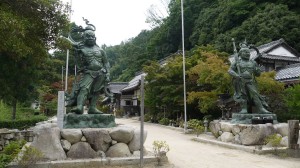
KannonshÅji  観音æ£å¯ºÂ – Temple 32
Location: Ishidera, Adzuchi-cho, Gamou-gun, Shiga
Main Image: Senjū Kannon
Special information:Â Nestled in a narrow strip of land on Mt Kinugasa, KannonshÅji has always been an important destination for mountain ascetics who practiced their austerities amid the strange massive boulders that cover the mountain. There is a profound mystical energy here, and many of the rocks are carved with ancient Buddha figures that are now faded and worn from the weather and covered in lichen and moss. You really feel as though you might be spirited away by mountain sprites as you wander any one of the eight approach pathways up the mountain. The temple complex was struck by lightning in 1990, completely destroying the temple and its sacred image of Kannon. The new temple, with its new magnificent thousand-armed Kannon, was only opened in 2007.
Find out more:Â http://www.kannon.or.jp/
http://www.sacredjapan.com/Temple%2032/Temple%2032.htm
Kegonji è¯åŽ³å¯º- Temple 33
Location: Ibigawa-chÅ, Ibi-gun, Gifu-ken
Main Image: JÅ«ichimen Kannon
Special information: The final temple of the pilgrimage is far up in the mountains in Tanigumi. Here many pilgrims place their jackets and books and staffs as an offering to Kannon in thanks for their successful journey. There is a sense of weariness here that echoes the fatigue one feels at the end of this long journey. There is a passageway within the temple that goes deep underneath the inner sanctum that contains the secret image of Kannon. This pitch-black chamber is called the “womb,†and once you enter the darkness of the passage and come out the other side, you are said to have been reborn and are ready to return to the mundane world, carrying Kannon’s sacred power and blessings with you. (from sacredjapan.com)
Important Dates: The Lily Garden opened on June 8th, and will remain so until July 20th.
Find out more:
http://www.saikoku33.gr.jp/33/index.htm
Get out there and explore, and if you get a chance to visit any or all of them, be sure to tell me (and Hyogo Times) about your adventures!
Been a pleasure hitting the pilgrim trail with you,
Lemmon

